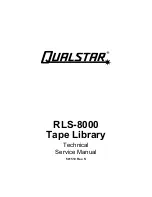
Constellation ES.3 Serial ATA Product Manual, Rev. F
5
1.0
Introduction
This manual describes the functional, mechanical and interface specifications for the following:
Seagate
®
Constellation
®
ES.3 Serial ATA model drives:.
These drives provide the following key features:
• 7200 RPM spindle speed.
• Full-track multiple-sector transfer capability without local processor intervention.
• High instantaneous (burst) data-transfer rates (up to 600MB per second).
• Native Command Queuing with command ordering to increase performance in demanding applications.
• Perpendicular recording technology provides the drives with increased areal density.
• PowerChoice™ for selectable power savings
• SeaTools™ diagnostic software performs a drive self-test that eliminates unnecessary drive returns.
• State-of-the-art cache and on-the-fly error-correction algorithms.
• Support for S.M.A.R.T. drive monitoring and reporting.
• Supports latching SATA cables and connectors.
• Top Cover Attached motor for excellent vibration tolerance
• Worldwide Name (WWN) capability uniquely identifies the drive.
For more information on FIPS 140-2 Level 2 certification see See Section 4.0 on page 28 .
1.1
About the Serial ATA interface
The Serial ATA interface provides several advantages over the traditional (parallel) ATA interface. The primary advantages include:
• Easy installation and configuration with true plug-and-play connectivity. It is not necessary to set any jumpers or other configura-
tion options.
• Thinner and more flexible cabling for improved enclosure airflow and ease of installation.
• Scalability to higher performance levels.
In addition, Serial ATA makes the transition from parallel ATA easy by providing legacy software support. Serial ATA was designed to
allow the user to install a Serial ATA host adapter and Serial ATA disk drive in current system and expect all existing applications to
work as normal.
The Serial ATA interface connects each disk drive in a point-to-point configuration with the Serial ATA host adapter. There is no
master/slave relationship with Serial ATA devices like there is with parallel ATA. If two drives are attached on one Serial ATA host
adapter, the host operating system views the two devices as if they were both “masters” on two separate ports. This essentially
means both drives behave as if they are Device 0 (master) devices.
The Serial ATA host adapter and drive share the function of emulating parallel ATA device behavior to provide backward
compatibility with existing host systems and software. The Command and Control Block registers, PIO and DMA data transfers, resets,
and interrupts are all emulated.
The Serial ATA host adapter contains a set of registers that shadow the contents of the traditional device registers, referred to as the
Shadow Register Block. All Serial ATA devices behave like Device 0 devices. For additional information about how Serial ATA emulates
parallel ATA, refer to the “Serial ATA: High Speed Serialized AT Attachment” specification. The specification can be downloaded from
.
Standard models
Self-Encrypting Drive (SED)
SED FIPS 140-2 Drive
ST4000NM0033
ST4000NM0053
ST4000NM0073
ST3000NM0033
ST3000NM0053
ST3000NM0073
ST2000NM0033
ST2000NM0053
ST2000NM0073
ST1000NM0033
ST1000NM0053
ST1000NM0073
Note
Seagate recommends validating the drive configuration with the selected HBA/RAID
controller manufacturer to ensure full 4 & 3TB capacity capabilities.
Note
The host adapter may, optionally, emulate a master/slave environment to host software where two devices on
separate Serial ATA ports are represented to host software as a Device 0 (master) and Device 1 (slave) accessed at the
same set of host bus addresses. A host adapter that emulates a master/slave environment manages two sets of
shadow registers. This is not a typical Serial ATA environment.







































